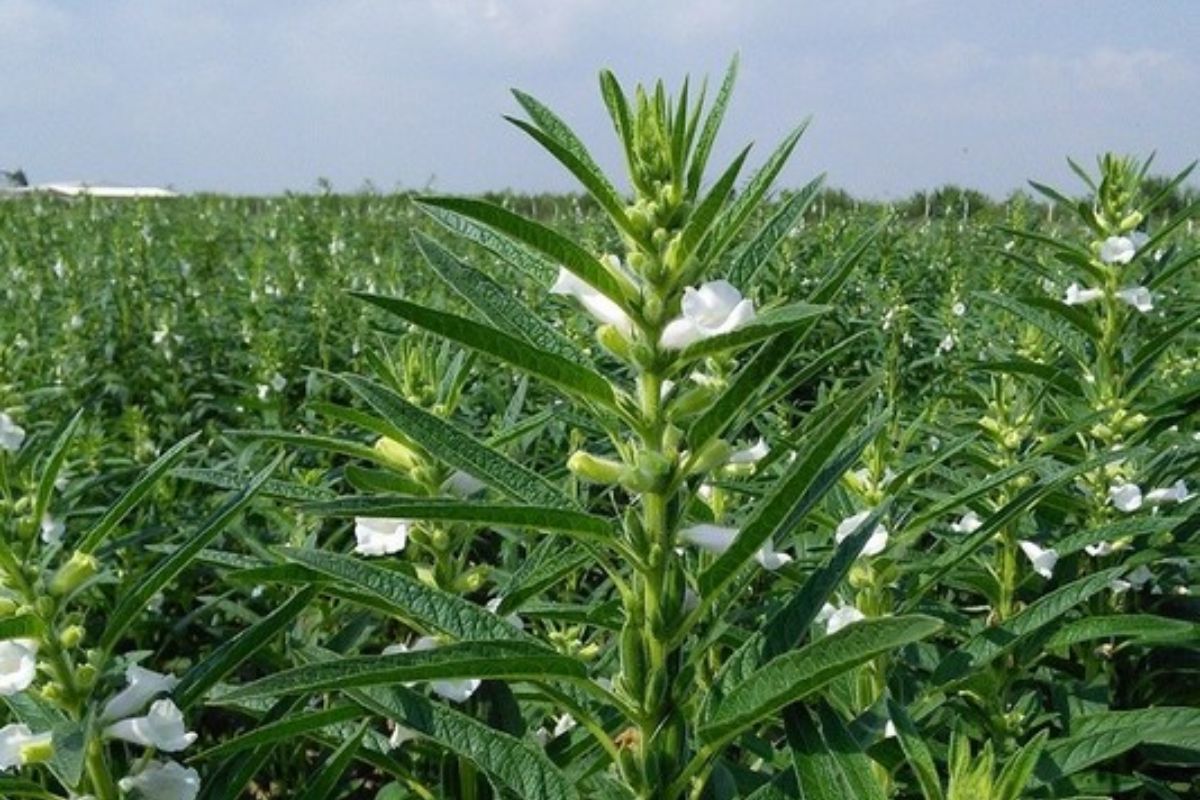Sesame Cultivation: Why it is beneficial for Farmers to Cultivate Sesame in Summer?
Good crop of sesame is in 25 to 40 degree temperature.
Sesame Cultivation | Sesame cultivation is rich in copper, manganese and calcium, phosphorus, magnesium, iron, zinc, molybdenum, vitamin B1, selenium, and dietary fiber Punjab, Haryana, Uttar Pradesh, Bihar, Rajasthan, Gujarat, West Bengal, Maharashtra, It is done in the states of Himachal Pradesh, etc.
Although three crops are obtained in a year, cultivating sesame in summer is a good option because more yields are obtained in this season. Sesame germinates well in hot climates and the outbreak of diseases and pests is also less.
Climate and Soil for Sesame Cultivation?
Long hot weather is good for good production of sesame. Sesame will not germinate well in temperatures below 20 degrees. The temperature should be between 25 to 40 degree Celsius for a good crop. Although it can be cultivated in any soil in the summer season, a good crop is obtained when planted in black soil. More sandy and alkaline soil is suitable for this. Soil pH (pH value) value should be 8, and a good drainage system is necessary.

Improved Varieties
Cultivation of these varieties of sesame in the summer season will give more yield. T.K.G. 21 variety gets ready in 80 to 85 days and gives about 6 to 8 tons per hectare yield. Apart from this, T.K.G. 22, J.T. 7, 81, 27, etc. can also be used. These varieties get ready in 75 to 85 days and flowers also start coming in 30 to 35 days. The per hectare yield of these varieties is 8-10 tons.
Field Preparation and Sowing
Before sowing, deep plowing of the field should be done, and it is necessary to level it by running the plow. While preparing the field, apply cow dung manure or vermicompost in appropriate quantities. Keep in mind that there is enough moisture in the field at the time of sowing so that the seeds can germinate quickly. For summer cultivation, sowing is done in February. It can be sown in two ways – line and sprinkler methods.
5-6 kg of seed per hectare is required for sowing by sprinkler method, whereas 4-5 kg of seed is required per hectare for line sowing. Plant-to-plant distance of 10-15 cm for higher yield. Should be kept and 30 to 45 cm between row to row. There should be a distance of To prevent root and stem rot disease, it is necessary to treat the seeds before sowing.

Fertilization and Irrigation
To get a good crop of sesame, it is necessary to use the right amount of fertilizer. At the time of sowing, use 1.5 tons of cow dung manure along with Azotobacter and Phosphor dissolving bacteria (PSB) at the rate of 5 kg per hectare. Apply half dose of Nitrogen at the time of sowing and half dose after 25-30 days of sowing. As far as irrigation is concerned, irrigation should be done in 8-10 days in summer season.
When to Harvest the Crop
When the crop is ripe, the stem and pods turn yellow. That means harvesting should be done at this time. If the crop is left in the field for a long time, the pods start cracking and the seeds are scattered.
Also Read: Ankush Giri succeeded in Pearl Farming by learning from failures
Contact us – If farmers want to share any valuable information or experiences related to farming, they can connect with us via phone or whatsapp at 9599273766 or you can write to us at “[email protected]”. Through Kisan of India, we will convey your message to the people, because we believe that if the farmers are advanced then the country is happy.
You can connect with Kisan of India on Facebook, Twitter, and Whatsapp and Subscribe to our YouTube channel.



